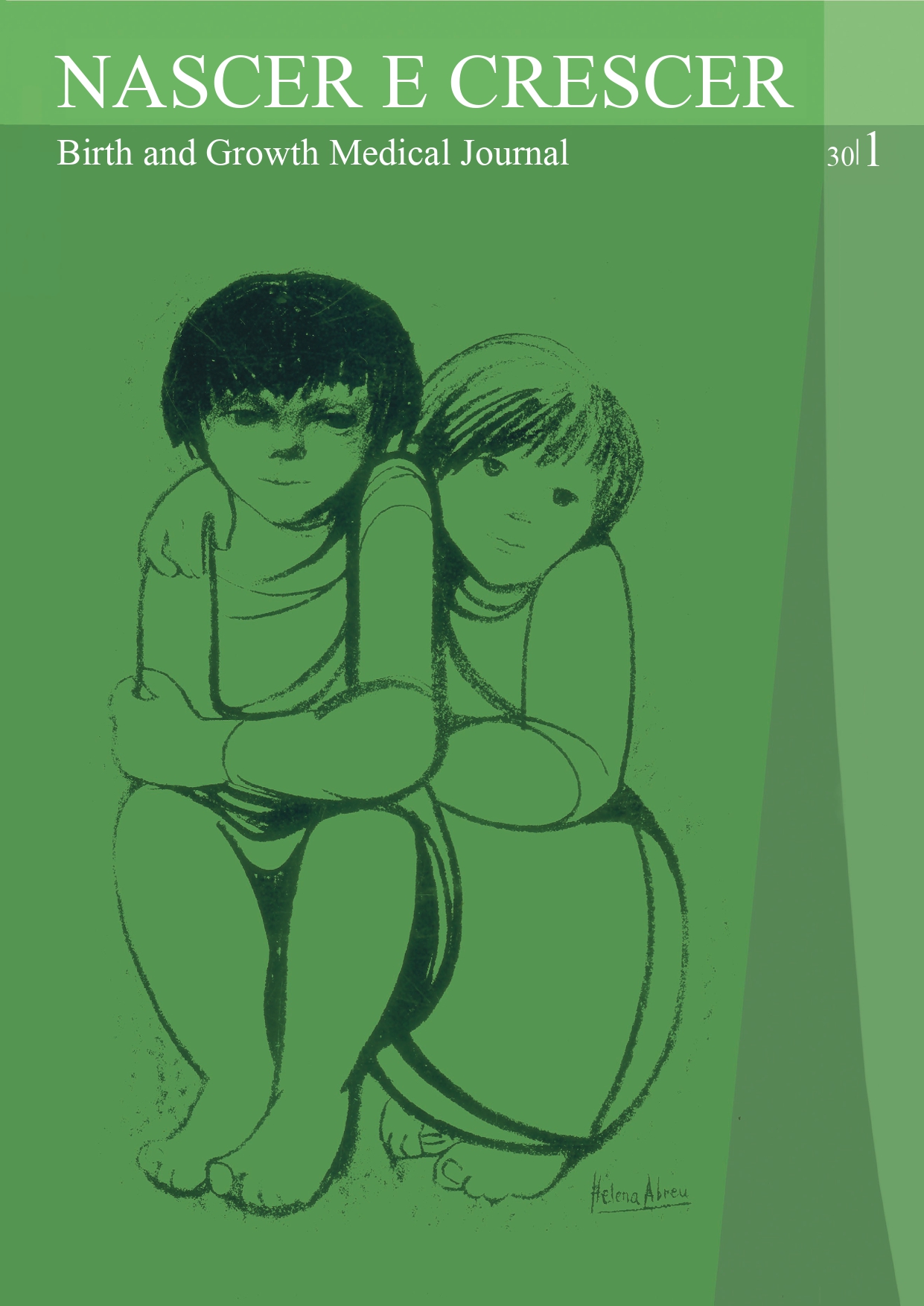Suspecting classical homocystinuria in an adolescent born before the newborn screening program
DOI:
https://doi.org/10.25753/BirthGrowthMJ.v30.i1.18753Keywords:
homocystinuria, neonatal screening, Homocystinuria; Newborn Screening; Sinus ThrombosisAbstract
Introduction: Classical homocystinuria (HCU) is an autosomal recessive disorder caused by a deficiency in the cystathionine beta-synthase enzyme and associated with a high probability of vascular complications. Herein is presented the case of an adolescent diagnosed with HCU during cerebral venous sinus thrombosis (CVST) study.
Case Report: A 14-year-old girl presented with thrombophilia screening tests suggestive of HCU during CVST study. After referral to an Inherited Metabolic Diseases Unit, she started supplementation with pyridoxine, folic acid, vitamin B12, betaine anhydrous, and cysteine and was advised to restrict natural proteins and methionine from diet. Genetic analysis revealed a homozygous CBS mutation (c.572C>T (p.T191M) with c.699C>T (p.Y233Y) polymorphism.
Discussion: In adolescents born before 2004 (year of implementation of the Portuguese newborn screening program), HCU should be considered when studying hypercoagulability syndromes, as it is a treatable condition and treatment can prevent major morbidity and mortality causes.
Downloads
References
Morris AAM, Ko V, Santra S, Andria G, Ben-omran TIM, Chakrapani AB, et al. Guidelines for the diagnosis and management of cystathionine beta-synthase deficiency. 2017;49–74.
Ali Mazaheri, Neda Mostofizadeh MH. Homocystinuria with stroke and positive familial history. Adv Biomed Res. 2017; 6:132.
Yap S, Annesley-williams D, Hardiman O. Cerebral venous sinus thrombosis in homocystinuria : Dietary intervention in conjunction with anticoagulation. 2017; 5:1-4.
https://doi.org/10.1177/2050313X17722289.
Silva GS, Maurício C, Almeida O De, Penteado E, Maiumi M, Ballalai H, et al. Trombose Venosa Cerebral e Homocistinúria. Relato de caso. 2001; 59:815–6.
Gowda VK, Nanjundappa RC, Pendharkar H BN. Homocystinuria with Cerebral Venous Sinus Thrombosis: Excellent Recovery with Intravenous Recombinant Tissue Plasminogen Activator. Iran J Child Neurol. 2017; 11:48–52.
Woods E, Dawson C, Senthil L, Geberhiwot T. Cerebral venous thrombosis as the fi rst presentation of classical homocystinuria in an adult patient. 2017;2016–8.
Dao JM, Qubty W. Headache Diagnosis in Children and Adolescents. Current Pain and Headache Reports; 2018;4–9.
Buoni S, Molinelli M, Mariottini A, Rango C, Medaglini S, Pieri S, et al. Homocystinuria With Transverse Sinus Thrombosis. J Child Neurol. 2001; 16:688-90. https://doi.org/10.1177/088307380101600913.
Walter JH, Jahnke N, Remmington T. Newborn screening for homocystinuria. Cochrane Database of Systematic Reviews 2015; 10: CD008840. https://doi.org/10.1002/14651858.CD008840.pub4.
Keller R, Chrastina P, Pavlíková M, Gouveia S, Ribes A, Kölker S, et al. Newborn screening for homocystinurias : Recent recommendations versus current practice. 2019; 128-39.
Marcão A, Couce ML, Nogueira C, Fonseca H, Ferreira F, Fraga JM, et al. Newborn Screening for Homocystinuria Revealed a High Frequency of MAT I/III Deficiency in Iberian Peninsula. JIMD Rep. 2015; 20 113-20.
Urreizti R, Asteggiano C, Bermudez M, Córdoba A, Szlago M, Grosso C, et al. The p.T191M mutation of the CBS gene is highly prevalent among homocystinuric patients from Spain, Portugal and South America. J Hum Genet. 2006; 51:305-13.
Vilarinho L, Rocha H, Sousa C, Marcão A, Fonseca H, Bogas M, et al. Four years of expanded newborn screening in Portugal with tandem mass spectrometry. J Inherit Metab Dis. 2010; 33:S133-8. https://doi.org/10.1007/s10545-010-9048-z.
Downloads
Published
How to Cite
Issue
Section
License
Copyright (c) 2021 Fábia Ginja de Carvalho, Teresa Campos, Joana Soares dos Reis, Mariana Portela, Carla Vasconcelos, Carla Ferreira, Arnaldo Cerqueira, Ângela Oliveira, Laura Vilarinho, Elisa Leão-Teles, Esmeralda Rodrigues

This work is licensed under a Creative Commons Attribution-NonCommercial 4.0 International License.
Copyright and Authors' Rights
All articles published in Nascer e Crescer - Birth and Growth Medical Journal are Open Access and comply with the requirements of funding agencies or academic institutions. For use by third parties, Nascer e Crescer - Birth and Growth Medical Journal adheres to the terms of the Creative Commons License "Attribution - Non-Commercial Use (CC-BY-NC)".
It is the author's responsibility to obtain permission to reproduce figures, tables, etc. from other publications.
Authors must submit a Conflict of Interest statement and an Authorship Form with the submission of the article. An e-mail will be sent to the corresponding author confirming receipt of the manuscript.
Authors are permitted to make their articles available in repositories at their home institutions, provided that they always indicate where the articles were published and adhere to the terms of the Creative Commons license.


